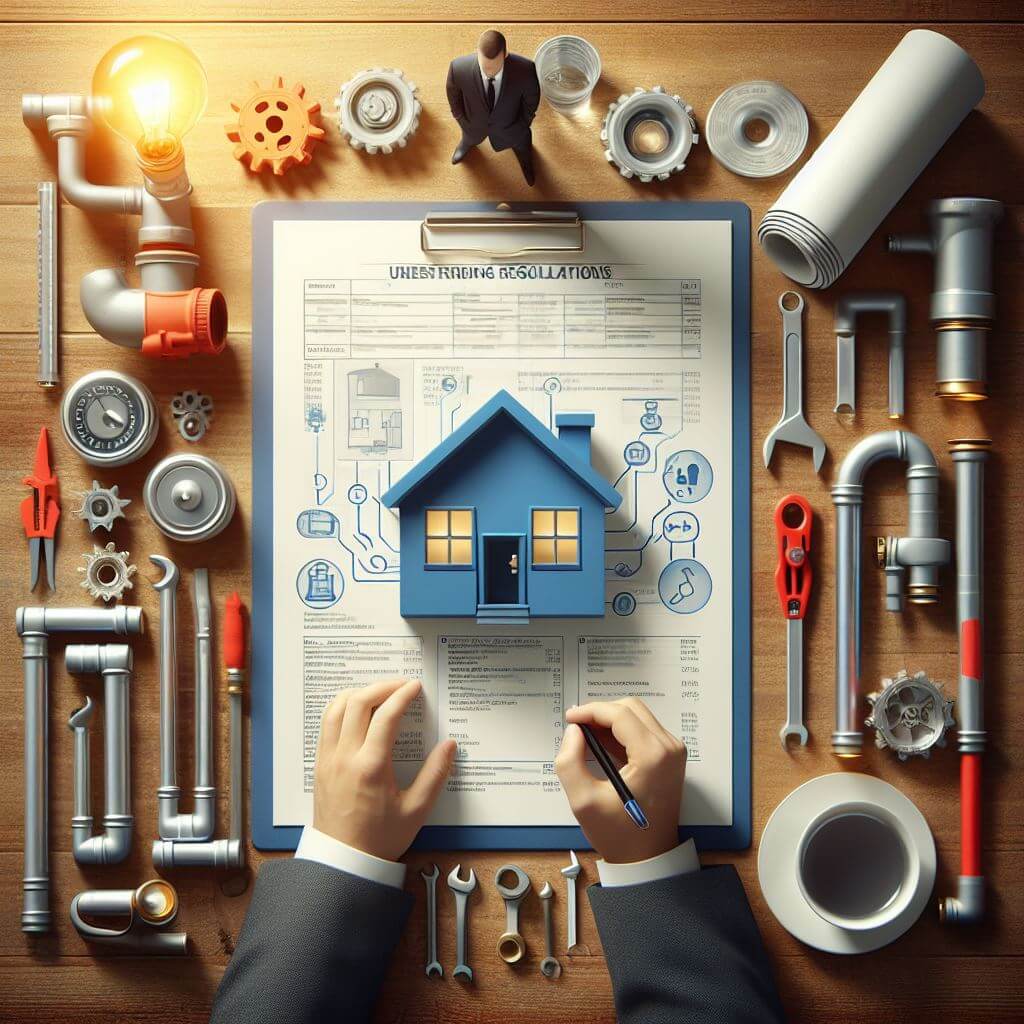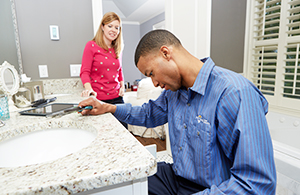Learning the Core Concepts of Home Plumbing: A Beginner's Introduction
Learning the Core Concepts of Home Plumbing: A Beginner's Introduction
Blog Article
Just how do you feel in regards to Plumbing basics: How your home plumbing works?

Plumbing is a vital element of any kind of home, in charge of supplying clean water for alcohol consumption, cooking, and showering, in addition to removing wastewater safely. Recognizing the fundamentals of home plumbing is vital for each house owner to make certain appropriate upkeep, troubleshooting, and, if essential, fixings. In this beginner's guide, we'll cover the fundamental principles of home plumbing to help you end up being extra aware of just how it functions.
Water Heating System
The water heating unit is responsible for heating water for domestic usage, consisting of showering, food preparation, and cleaning. Common sorts of hot water heater include tank-type hot water heater, tankless (on-demand) water heaters, and heatpump water heaters. The hot water heater is connected to the supply of water system and delivers hot water to plumbing components as needed.
Drainage System
The drain system eliminates wastewater from your home and brings it away to a sewage therapy center or septic tank. It consists of a network of pipelines, installations, and components that carry wastewater from plumbing fixtures to the major sewage system line or sewage-disposal tank. Appropriate drain is vital to avoid obstructions, backups, and sewer leakages.
Ventilation System
The air flow system aids keep proper air pressure and stop sewage system gases from entering your home. Air vent pipes, additionally known as air vent stacks, prolong from plumbing components to the roofing, allowing sewage system gases to run away securely outside. Air flow pipes also permit air to go into the drainage system, helping with smooth wastewater circulation and stopping suction or vacuum cleaner impacts.
Water System
The water supply system brings tidy water into your home from a community water source or a private well. It includes a primary water line that links to your home's plumbing system, usually located underground. A water meter measures the amount of water consumed, while a shut-off shutoff permits you to manage the flow of water into your home.
Plumbing Components
Plumbing fixtures are tools that supply water to numerous parts of your home and consist of sinks, faucets, commodes, showers, tubs, and appliances such as dishwashers and cleaning equipments. Each fixture is linked to the water system system via pipes and installations and may have its shut-off valve for maintenance or emergencies.
Typical Plumbing Devices
Having the right tools accessible is necessary for carrying out standard plumbing repair services and upkeep jobs. Usual plumbing devices include flexible wrenches, monkey wrench, pliers, pipe cutters, hacksaws, plungers, augers (or drainpipe snakes), and Teflon tape. Having these tools conveniently available can assist you take on small plumbing problems effectively.
Standard Plumbing Fixings
While some plumbing fixings may require professional support, many usual problems can be attended to with standard DIY strategies. Learning exactly how to repair a dripping faucet, unclog a drainpipe, replace a toilet flapper, or fix a trickling showerhead can conserve you money and time on plumbing repairs.
Final thought
Understanding the essentials of home plumbing is important for each property owner to preserve a secure, useful, and efficient plumbing system. By acquainting on your own with the supply of water system, plumbing components, drainage system, ventilation system, common plumbing tools, and basic fixings, you can confidently attend to small plumbing issues and ensure your home's plumbing system operates efficiently.
Plumbing Basics
Plumbing follows the basic laws of nature — gravity, pressure and water seeking its own level. Knowing this, you can understand its "mysteries" and make dozens of fixes to your home's plumbing system. You can save yourself time, trouble and money!
The plumbing system in your home is composed of two separate subsystems. One subsystem brings freshwater in, and the other takes wastewater out. The water that comes into your home is under pressure. It enters your home under enough pressure to allow it to travel upstairs, around corners or wherever else it's needed. As water comes into your home, it passes through a meter that registers the amount you use. The main water shut-off, or stop, valve is typically located close to the meter. In a plumbing emergency, it's vital that you quickly close the main shutoff valve. Otherwise, when a pipe bursts, it can flood your house in no time. If the emergency, like a leak, is confined to a sink, shower, or toilet, however, you may not want to turn off your entire water supply. Therefore, most fixtures should have individual stop valves.
Water from the main supply is immediately ready for your cold water needs. The hot water supply, however, requires another step. One pipe carries water from the cold water system to your water heater. From the heater, a hot water line carries the heated water to all the fixtures, out-lets, and appliances that require hot water. A thermostat on the heater maintains the temperature you select by turning the device's heating elements on and off as required. The normal temperature setting for a home water heater is between 140 degrees F and 160 degrees F (60 and 71 Celsius) but 120 degrees F (49 C) is usually adequate and is also more economical. Some automatic dishwashers require higher temperature water, though many of these have a water heater within them that boosts the temperature another 20 degrees F.
Drainage Systems
Whether your home is on a sewer or septic system, the systems within your home are essentially the same. Drainage systems do not depend on pressure, as supply systems do. Instead, waste matter leaves your house because the drainage pipes all pitch, or angle, downward towards the sewer. Gravity pulls the waste along. The sewer line continues this downward flow to a sewage treatment facility or a septic tank.
While the system sounds simple, there's more to it, including vents, traps and clean outs. The vents sticking up from the roof of your house allow air to enter the drainpipes. If there were no air supply coming from the vents, wastewater would not flow out properly and the water in the traps would need to be siphoned away.
Traps are vital components of the drainage system. You can see a trap under every sink. It is the curved or S-shape section of pipe under a drain. Water flows from the basin with enough force to go through the trap and out through the drainpipe, but enough water stays in the trap afterward to form a seal that prevents sewer gas from backing up into your home. Every fixture must have a trap. Toilets are self-trapped and don't require an additional trap at the drain. Older bathtubs frequently have drum traps, which not only form a seal against sewer gas but also collect hair and dirt in order to prevent clogged drains. However, drum traps aren't up to current code standards anymore. Some kitchen sinks have grease traps to collect grease that might otherwise cause clogging. Because grease and hair are generally the causes of drain clogs, traps often have clean-out plugs that give you easier access to remove or break up any blockage.
Since a drainage system involves all of these components, it is usually referred to as the DWV: the drain-waste-vent system. If water is to flow out freely and waste is to exit properly, all components of the DWV must be present and in good working order. Examine the pipes in the basement or crawl space under your house to help you understand the system better.
Supply and Drainage Subsystems
The supply and drainage subsystems are two distinct operations, with no overlapping between them. There are bridges between the two, however, and the bridges are what make the plumbing system worth having. In plumbing jargon, any bridge between the supply and drainage systems is a fixture.
Toilets, sinks, and tubs are fixtures. In addition, an outside faucet is a fixture and so is a washing machine. All devices that draw freshwater and discharge wastewater are fixtures, and all are designed to keep the supply and drainage systems strictly segregated.
Some fixtures have individual supply shutoff valves so you don't need to close the main shutoff to repair them. It's a good idea to make sure everyone in the family knows the location of the main shutoff valve in your house as well as how to use it. You may want to tag the main shutoff valve so anyone can easily find it.
Before you embark on any plumbing repairs, always turn off the water supply to the fixture or the main shutoff. In addition, check with your local plumbing code official before you add or change any pipe in your house. You will learn what is allowed and what is prohibited and whether or not a homeowner is allowed to do his or her own work. If you get the green light, you can save yourself a lot of money by doing your own repairs.
https://home.howstuffworks.com/home-improvement/plumbing/plumbing-basics-ga.htm

I was made aware of that article about through a good friend on our other web blog. Appreciated our blog? Please quickly share it. Let other people locate it. I love your readership.
Call Report this page